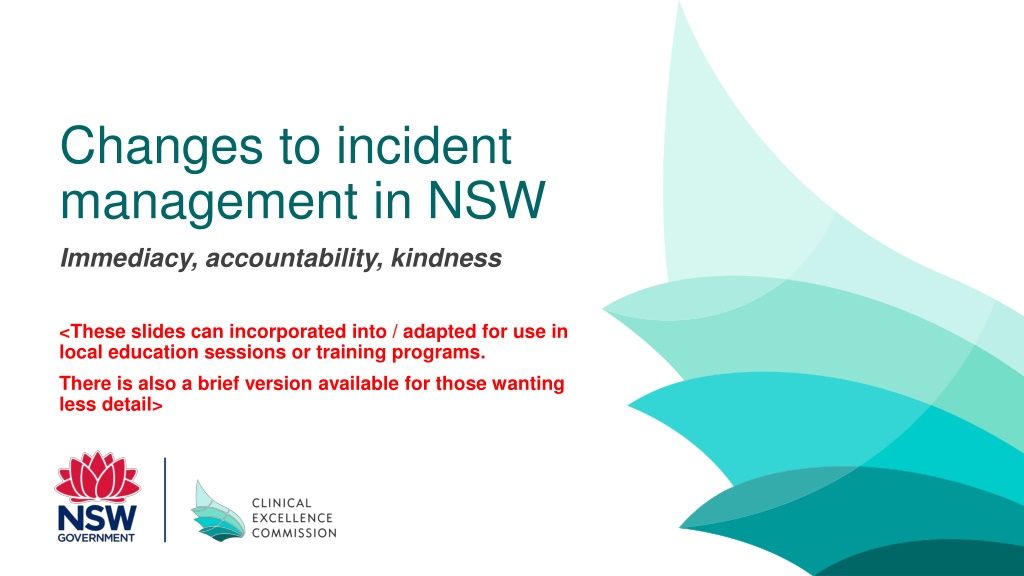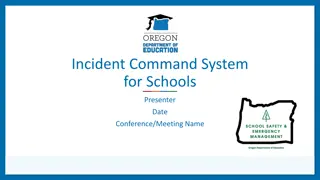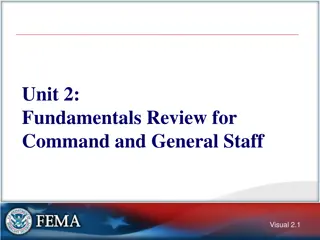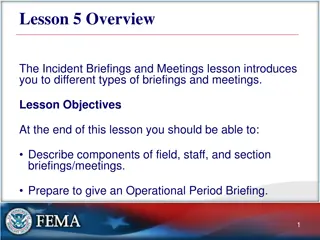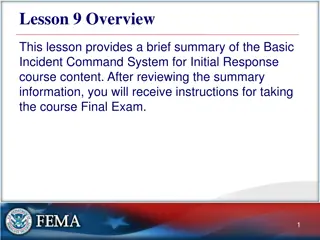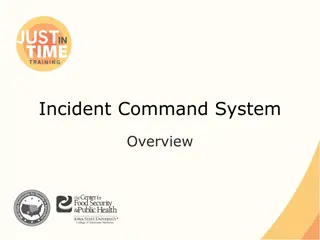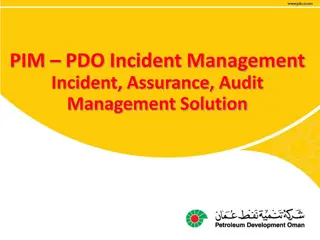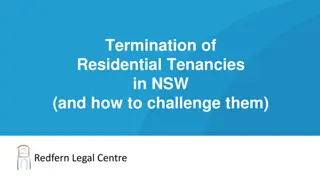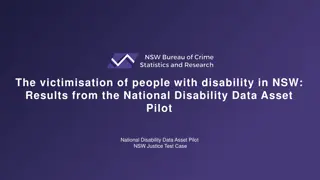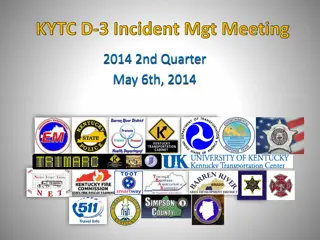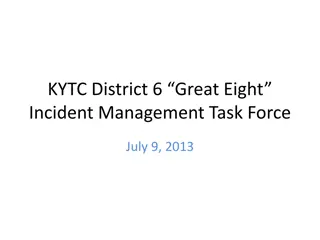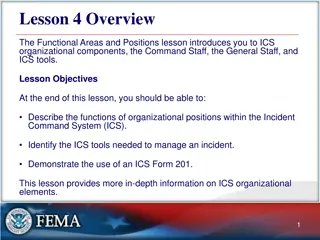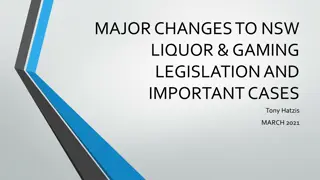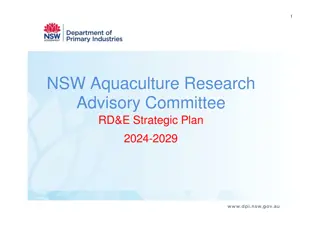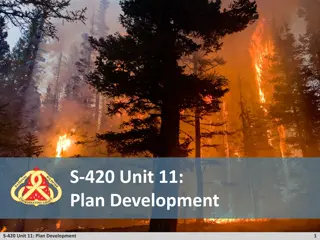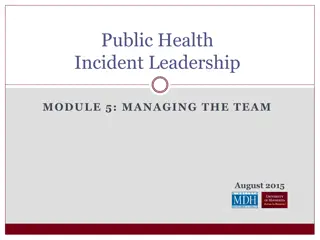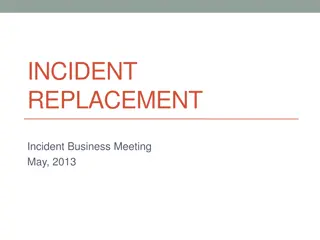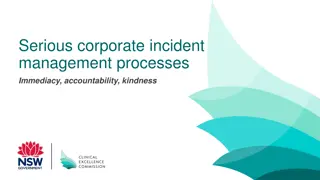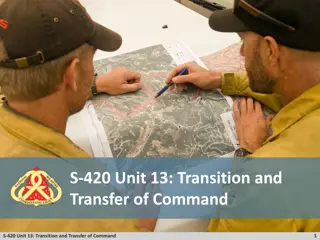Changes to Incident Management in NSW: Updated Approaches & Legislation
Explore the transformative changes in incident management in NSW, emphasizing immediacy, accountability, and kindness. Learn about the new legislation affecting incident review and management, including key policy adjustments and the implementation of preliminary risk assessment. Discover the proactive steps taken to address incidents promptly and ensure patient safety, guided by principles of clinical excellence and compassionate care.
Download Presentation

Please find below an Image/Link to download the presentation.
The content on the website is provided AS IS for your information and personal use only. It may not be sold, licensed, or shared on other websites without obtaining consent from the author. Download presentation by click this link. If you encounter any issues during the download, it is possible that the publisher has removed the file from their server.
E N D
Presentation Transcript
Changes to incident management in NSW Immediacy, accountability, kindness <These slides can incorporated into / adapted for use in local education sessions or training programs. There is also a brief version available for those wanting less detail>
When things go wrong Our guiding principles Accountability We are open with patients when things go wrong. We review to learn and make changes to improve our system. We share our learnings. Kindness We are caring We acknowledge the distress of all who are affected. We have an open and just culture. Immediacy We act immediately when patients are harmed or at risk of harm. Clinical Excellence Commission
New legislation . a new chapter in our approach to incident review and management Link to the legislation: Legislative changes Clinical Excellence Commission
Changes to the legislation In the new Incident Management policy Four key changes 1. Preliminary risk assessment 2. Separation of findings and recommendations 3. Enlisting more team members to assist with the recommendations 4. Alternate review methodologies Immediacy Accountability Kindness
1. Preliminary risk assessment (PRA) Clinical Excellence Commission
Preliminary risk assessment Advice to Chief Executive to guide the response to an incident A PRA is undertaken following a reportable incident (clinical Harm Score 1 incident) or a clinical incident the CE believes may be due to a serious systemic problem. The CE appoints a small team of PRA assessors to gather early information to guide the incident response The PRA team provides advice to the CE in a PRA report A PRA must be completed within 48 to 72 hours or sooner of the incident notification. Clinical Excellence Commission 6
Undertaking a PRA The process The PRA team: Visit the site where the incident took place Review files Speak to staff Take photos Work through the PRA report template provide an understanding of the events identify immediate actions for people and the environment to be safe and supported ensure outstanding risks are escalated for action check on wellbeing of key staff guide the response to an incident ensure media interest and reputational risk are managed ensure immediate notifications are made e.g. Coroner, TGA confirm the Harm Score finalise the Reportable Incident Brief (RIB). Clinical Excellence Commission
Documentation Mandatory - complete PRA report in ims+ Not mandatory - PRA action log to track actions arising from the PRA. PRA Report PRA action log
Dedicated family contact The PRA team assign a dedicated family contact This staff member: provides a consistent point of contact for families maintains regular communication with the family Clinical Excellence Commission 9
Tasks of the dedicated family contact establish a preferred communication approach with the family raise any questions or concerns ensure the family receive the support they need by engaging other resources e.g. interpreters, social work, accommodation explain the incident management process scope of the review steps involved timeframes opportunities to communicate or engage arrange for the family to meet with the open disclosure and / or review team at defined time periods Clinical Excellence Commission 10
Dedicated family contact engagement with family Making contact with family When? Why? Introduce self and role Arrange any practical assistance Explain incident management process Answer questions Link family in with open disclosure team and review team Pass on family queries or recollections to review team member Explain next steps Link family in with open disclosure and /review teams as appropriate After the preliminary risk assessment After completion of findings report Explain next steps Link family in with open disclosure team After completion of recommendations report As per the family s wishes Make contact in keeping with a family s wishes during the review process and sometimes beyond the review process Clinical Excellence Commission 11
2. Separation of findings and recommendations Clinical Excellence Commission
Determining findings A serious adverse event review (SAER) is completed for all clinical Harm Score 1 incidents. The SAER team gather information from a range of sources and undertake interviews to: Determine what happened Determine factors that caused or contributed to the incident. Identify any practices, processes or systems that could be reviewed. The SAER team write these up in a findings report Clinical Excellence Commission 13
Findings report Written using the template in the Incident Management Policy (Appendix E) Due to CE within Health Service timeframe (before 60 days) Once approved by CE, findings can be shared with the family by the Open Disclosure team. (Dedicated family contact helps to organise this). Clinical Excellence Commission 14
Recommendations report There will not always be a recommendations report CE decides if the report is needed. CE may appoint additional experts to the SAER team to prepare this report Must be finalised and submitted to Ministry of Health within 60 days of incident notification Clinical Excellence Commission 15
3. Enlisting more team members to assist with recommendations Clinical Excellence Commission
More people on the SAER team? The Chief Executive or delegate (e.g. Director Clinical Governance) decides whether to appoint additional members to the team to prepare recommendations report. Expertise may include a: Human factors expert Redesign / Improvement expert Senior manager Manager from another service/facility/agency to support feasibility e.g. eHealth NSW for digital health tools such as the eMR Manager/ from another service/facility/agency responsible for implementing a recommendation e.g. NSW Ambulance, Ministry of Health, eHealth NSW. Clinical Excellence Commission 17
Developing recommendations SAER team process If additional experts are needed, a request is sent to the CE for approval and new members are formally appointed. The team leader sends the additional members a copy of the findings report The team meet (face-to-face where possible) and the team leader updates the new members about the review to date. Clinical Excellence Commission 18
4. Alternate review methodologies Clinical Excellence Commission
Serious adverse event reviews A serious adverse event review (SAER) must be completed for clinical Harm Score 1 incidents. In the past, a root cause analysis (RCA) was the only type of SAER allowed, however the amended legislation allows for alternate review methods in addition to RCA Clinical Excellence Commission 20
Serious adverse event review Four approaches The Chief Executive determines the review method for each incident from approved methods outlined in the Regulations: 1. Root cause analysis Adopted from industry Recommended for use with Australian Sentinel Events Recommended for use with inpatient suicides Recommended for use with homicides Recommended for use with suicides within 24 hours of discharge from Emergency Department or contact with mental health clinician 2. Systems analysis of clinical incidents - London Protocol (LP) Recommended for use with inpatient falls 3. NSW Health Concise incident analysis Recommended for use with community suicides 4. NSW Health Comprehensive incident analysis Recommended for use with community suicides with complexity Clinical Excellence Commission 21
Review methodologies toolkits Toolkits including templates, factsheets, and information packs are available on the Clinical Excellence Commission s Serious Incident Investigation and Management web page. https://www.cec.health.nsw.gov.au/Review-incidents/Upcoming-changes-to-incident- management Clinical Excellence Commission 22
What about corporate HS 1 incidents? Not in the legislation but super important Have a PRA completed Assign dedicated family contact for incident involving death of a staff member Corporate Harm Score 1 review completed (used to be called corporate RCA ) Privilege does not apply to corporate incidents Clinical Excellence Commission 23
Serious Incident Investigation and Management Clinical Excellence Commission E CEC-SIIM@health.nsw.gov.au W cec.health.nsw.gov.au 1 Reserve Road, St Leonards NSW 2065 Clinical Excellence Commission
